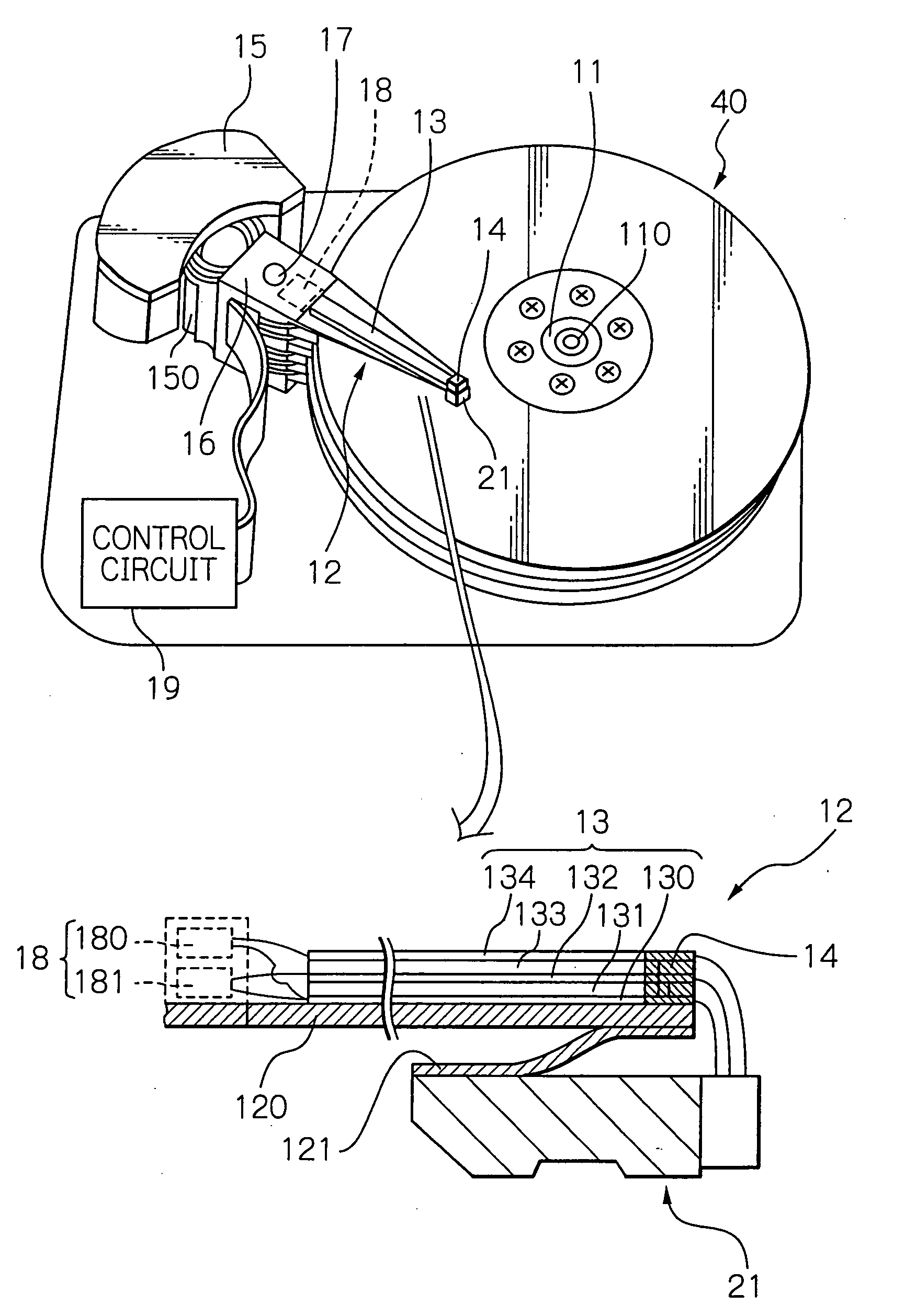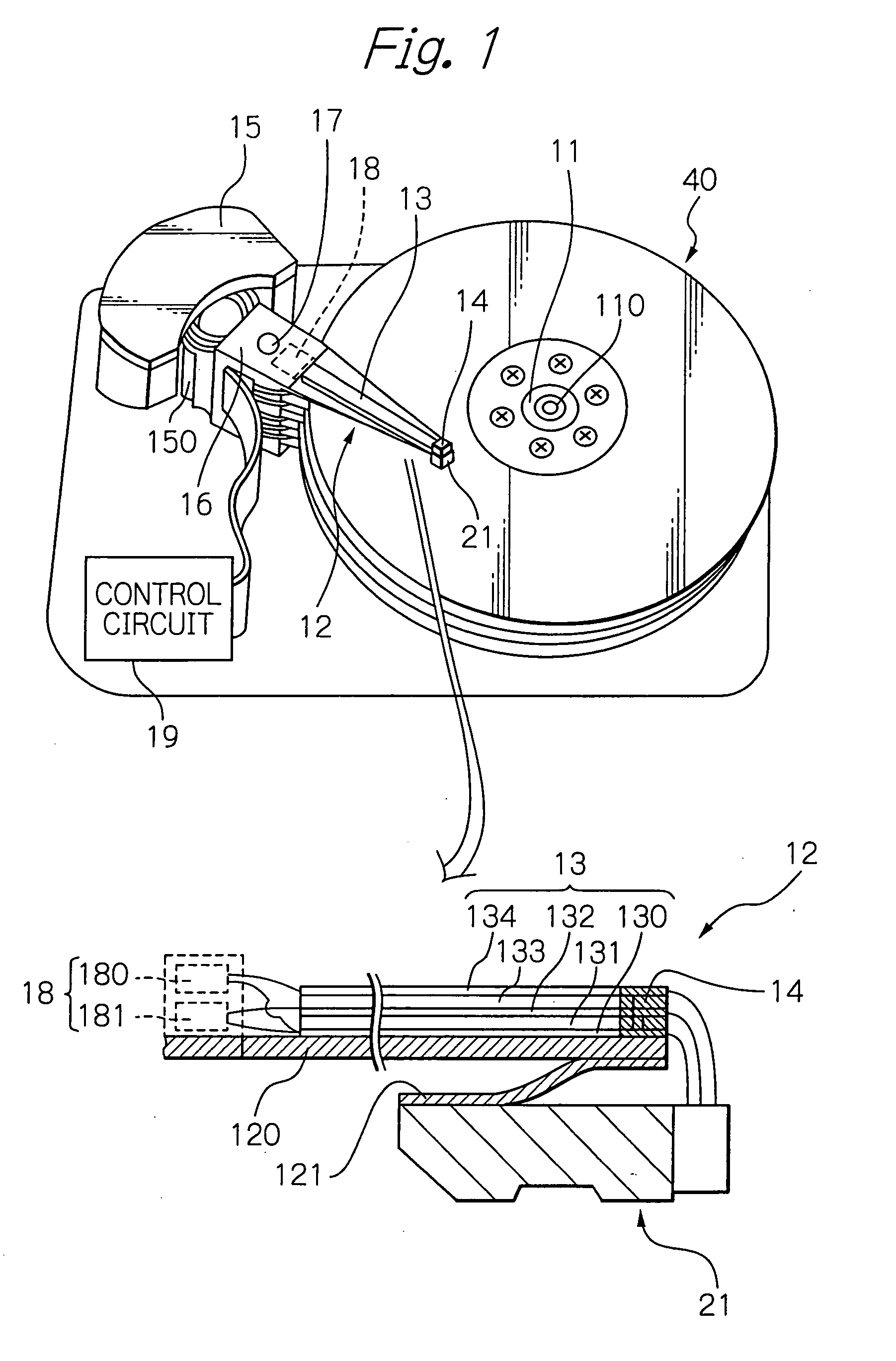Magnetic recording method using ferromagnetic resonance and thin-film magnetic head for using the method
a magnetic recording and ferromagnetic resonance technology, applied in special recording techniques, instruments, nanoinformatics, etc., can solve the problems of saturated magnetic recording, degrading the thermal stability of the magnetization, increasing the coercive force of the magnetic recording layer, etc., and achieve high coercive force and high accuracy
- Summary
- Abstract
- Description
- Claims
- Application Information
AI Technical Summary
Benefits of technology
Problems solved by technology
Method used
Image
Examples
first embodiment
[0090]FIG. 3a shows a cross-sectional view taken along line A-A of FIG. 2 illustrating the structure of a major portion in the thin-film magnetic head according to the present invention, and FIG. 3b shows a plain view showing the structure in the slider end surface 211 as viewed from the ABS 2100 side.
[0091]As shown in FIG. 3a, reference numeral 210 denotes a slider substrate composed of ALTIC (Al2O3—TiC) or the like and has the ABS 2100 to be opposed to the magnetic disk surface. The MR effect element 33, the electromagnetic coil element 34 and the overcoat 39 for protecting these elements are mainly formed on / above the element formation surface 2101 of this slider substrate 210.
[0092]The MR effect element 33 includes an MR effect multilayer 332 and a lower shield layer 330 and an upper shield layer 334 which sandwich this multilayer 332. The MR effect multilayer 332 includes a current-in-plane (CIP) giant magnetoresistive (GMR) multilayered film, a current-perpendicular-to-plane (...
second embodiment
[0122]FIG. 5 shows a cross-sectional view taken along the line A-A of FIG. 2, illustrating a main portion of the thin-film magnetic head according to the present invention.
[0123]As shown in FIG. 5, this embodiment has the same structure as the first embodiment shown in FIG. 3 except that an auxiliary shield layer 346′ and a main magnetic pole layer 340′ are connected magnetically. Therefore, the description of other structure than the both layers will not be repeated.
third embodiment
[0124]According to this embodiment, as shown in FIG. 5, a portion separated from an end portion on the slider end surface 211 side of a main pole yoke layer 3400′ possessed by a main magnetic pole layer 340′ is connected to the auxiliary shield layer 346′ magnetically. In this case, the shunt effect of magnetic flux possessed by a leading shield portion 3460′ which is an end portion on the slider end surface 211 side of the auxiliary shield layer 346′ is further increased. As a consequence, the magnetic field gradient of the write magnetic field can be increased even if the leading gap length DLG is not made so small, thereby increasing the possibility of the head design. FIG. 6 shows a cross-sectional view taken along the line A-A illustrating a main portion of the thin-film magnetic head according to the present invention.
[0125]According to this embodiment as shown in FIG. 6, in addition to the first embodiment shown in FIG. 3, provided are: a leading-side write coil 50 as a write...
PUM
 Login to View More
Login to View More Abstract
Description
Claims
Application Information
 Login to View More
Login to View More - R&D
- Intellectual Property
- Life Sciences
- Materials
- Tech Scout
- Unparalleled Data Quality
- Higher Quality Content
- 60% Fewer Hallucinations
Browse by: Latest US Patents, China's latest patents, Technical Efficacy Thesaurus, Application Domain, Technology Topic, Popular Technical Reports.
© 2025 PatSnap. All rights reserved.Legal|Privacy policy|Modern Slavery Act Transparency Statement|Sitemap|About US| Contact US: help@patsnap.com



